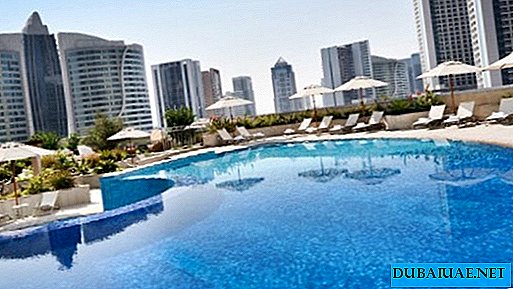 Tatyana Peschanskaya, doctor, candidate of medical sciences, passionate traveler and our regular author.
Tatyana Peschanskaya, doctor, candidate of medical sciences, passionate traveler and our regular author.
The Malay archipelago is considered one of the largest in the world. One of its smallest islands, with an area of 5561 square meters. km, Bali. Like the pearls of a crumbling necklace, islands stretch out on both sides of the equator, between the Pacific and Indian Oceans.
Life like a volcano
The volcanic ridge from Sumatra and Java stretches to Bali. The mountain lakes Batur and Bratan are also of volcanic origin. They feed the rivers flowing through the central and southern parts of Bali and irrigate countless rice fields known for their high yields.
The island of Bali is small, but the diversity of its landscapes is truly amazing. Lush tropical greenery, rice fields - terraces, palm groves - in the south, all this exists thanks to mountain lakes and rivers. Mountain lava beaches are typical for the north, impassable forests for the west, uplands and severe, meager landscape drowning in fog for the east. The two main volcanoes - Agung (3142 m the highest peak of the island) and Batur (1717 m) - are considered the abode of the gods.
 Volcanoes provide fertility of the island, supplying it with ash with a high content of minerals. On the other hand, they are still active, and therefore pose a threat to Bali, although the latest eruptions were recorded more than three decades ago. The population of Bali comes from two different ethnic groups who migrated here from the South China territories in 2500 - 1500. BC. At the beginning of the 16th century, there was a general Hinduization, and a caste system was established. Only 3% of Balinese Indians belong to the three castes called trianga, and all the rest are called Sudras and Jabs (commoners). Baliaga, the indigenous inhabitants of Bali, now live separately in some villages, trying to maintain the foundations of the pre-Hindu era. From colonization to independence, Europeans first reached the limits of Southeast Asia in the sixteenth century.
Volcanoes provide fertility of the island, supplying it with ash with a high content of minerals. On the other hand, they are still active, and therefore pose a threat to Bali, although the latest eruptions were recorded more than three decades ago. The population of Bali comes from two different ethnic groups who migrated here from the South China territories in 2500 - 1500. BC. At the beginning of the 16th century, there was a general Hinduization, and a caste system was established. Only 3% of Balinese Indians belong to the three castes called trianga, and all the rest are called Sudras and Jabs (commoners). Baliaga, the indigenous inhabitants of Bali, now live separately in some villages, trying to maintain the foundations of the pre-Hindu era. From colonization to independence, Europeans first reached the limits of Southeast Asia in the sixteenth century.
Spaniards and Portuguese are mainly interested in spicy-tasty plants on the Moluccas. In 1597, the Dutch first arrived in Bali, founding here the Netherlands East India Company, pursuing colonialist goals. In 1799, after the bankruptcy of the company, the Dutch government took control of the Indonesian islands. The archipelago is turning into a colony. And only on August 17, 1945, President Sukarno proclaimed the independence of Indonesia. Economic difficulties lead the state to collapse. In 1965, as a result of the coup, President Sukarno loses power. In 1998, the country was again overtaken by a deep economic and financial crisis.
Since 1999, the leading political force in the country has become a democratic party. A. Wahid was elected the fourth president. And in June 2004, the election of a new president took place, which was General Susimo Bambang Yudhoyeno. Of all the countries with a republican form of government, Indonesia (which includes the island of Bali) ranks third in the world in terms of the number of citizens participating in the presidential election. It was a big step forward.
Today, Bali with a population of 3 million people is an example of an agricultural society. Three quarters of its inhabitants are engaged in agriculture, where rice is a leader. Coffee, cloves, coconuts are cultivated in the mountainous areas of the island. Fisheries and salt mining have an ancient tradition, and the Balinese people have been engaged in the industrial cultivation of oysters and other marine inhabitants relatively recently. Population income is about US $ 1000 per year per person.
Harmony of the middle world
 In terms of climatic conditions, European summer is the best time to travel to Bali. From November to March, the northwestern monsoon brings rain here, and air humidity rises to 95%. Religion permeates all spheres of life of islanders. It is no coincidence that Bali is called the island of gods and demons. Daily sacrifices to the ancestors of demons, cockfights at the beginning of each temple festival, charming dances of young girls - all this becomes an expression of religious feelings. Colorful, vivid performances testify to the veneration of the gods and turn out to be so fascinating that it is impossible not to admire the local culture.
In terms of climatic conditions, European summer is the best time to travel to Bali. From November to March, the northwestern monsoon brings rain here, and air humidity rises to 95%. Religion permeates all spheres of life of islanders. It is no coincidence that Bali is called the island of gods and demons. Daily sacrifices to the ancestors of demons, cockfights at the beginning of each temple festival, charming dances of young girls - all this becomes an expression of religious feelings. Colorful, vivid performances testify to the veneration of the gods and turn out to be so fascinating that it is impossible not to admire the local culture.
The Hindu community in Bali is the only one so numerous outside of India. On the other hand, the local religion is so far from its roots that the Indian who came to Bali is likely to be considered a savage rather than a co-religionist. In the first centuries of our era, Hinduism was brought almost simultaneously with Buddhism by merchants who came to Indonesia. Among Javanese, he mixed with Buddhism and local beliefs. This "javanized" form of Hinduism paved the way for Bali in the 10th century, when the princess of Java married the king of Bali. Influenced by primitive animism, that is, a belief in the spirituality of nature, and the traditional cult of ancestors, the Indudharma religion developed over time, whose adherents consider themselves to be 94% of Balinese.
The veneration of ancestors and natural deities, spirits and demons, exorcist rituals, dances in a trance, sacrifices to demons and so on - all this goes back to Balinese cosmology. The countless rituals performed by man during the day are necessary in order to connect him with the cosmos and all the foundations of the universe. For the Balinese, their island is a microcosm, where mountains and the spaces above them are the realms of the gods (kaja), the earth and the spaces above it, including the sea, are the realms of the dark forces (kelod). The sacred mountain Agung is the abode of the god Shiva and the center of the world. People live in the middle sea, where all roads between settlements, estates and temples are laid along an imaginary axis from mountains to the sea. Kaja and Kelod also symbolize the contradictory nature of everything. Heaven and earth, the sun and moon, day and night, man and woman, life and death are opposed to each other, but at the same time exist in an indissoluble unity.
Since the human world is located between the two cosmic poles, his task is to maintain harmony. Therefore, man equally worships gods and demons, as evidenced by daily sacrifices. Making sacrificial gifts is painstaking work. They are left to their ancestors in distant temples, demons on the doorstep or at a dangerous street intersection. From Hinduism, the Balinese adopted the idea of reincarnation (reincarnation) of the soul. The degree of reincarnation is determined by karma: the sum of good and evil deeds committed in life. The goal is a virtuous life, since only in this case it becomes possible to break the chain of endless reincarnations and connect with the highest divine principle (mokta). Balinese, unlike the Hindus, believe that reincarnation occurs only within the limits of their own kind. The religious feelings of the people of Bali are expressed in the sacrifice and the ceremony of purification. The sacrifice that anyone can bring to God is understood widely: from rice grains and exquisitely prepared dishes to animals during temple holidays. Bali is often called the "island of ten thousand temples." And this is not an exaggeration, but rather an understatement: there are at least twenty thousand temples on this island, and this does not include home sanctuaries. The Balinese passionately love holidays and almost every day celebrations take place in some kind of temple. In addition to the general holidays, there are a number of private ceremonies through which every Balinese passes through life.
Balinese hospitality
Back in the late 1960s and 1970s. Bali island was considered the last paradise on Earth among hippies. No more than a hundred "flower children" came here a month. What now? The tourism business necessary for the island's economy began to develop. The tourist boom started in Bali in the late 1980s, and since then the number of places in hotels has increased to 32 thousand, and the number of tourists per year has exceeded the millionth mark. Today, Bali presents all the best international hotel chains. Hotel buildings are no higher than four floors, most with large parks and chic Spa centers. The program of excursions in Bali is very diverse and interesting.
 Our acquaintance with Bali began with a visit to the famous temples. The road leads us from the sea inland. Looking out the window, you get pleasure not only from the surrounding landscape, but also from how obviously the creative potential of local residents is manifested in these parts. It seems the car is driving through a sculpture exhibition.
Our acquaintance with Bali began with a visit to the famous temples. The road leads us from the sea inland. Looking out the window, you get pleasure not only from the surrounding landscape, but also from how obviously the creative potential of local residents is manifested in these parts. It seems the car is driving through a sculpture exhibition.
From generation to generation, the Balinese have been making decorations for the temples and facades of their homes. The first on our way is Pura Taman Ayun - the second largest temple complex in Bali. A narrow staircase leads upward, overlooking the entire architectural ensemble. Taman Ayun, surrounded by canals in which countless water lilies bloom, seems to us an island. Its second name is Floating Flower Garden. It is believed that this temple serves as a bathhouse for the heavenly nymphs - vidarara, the messengers of the gods. The square-shaped fountain in the southwestern part of the temple forms a symbolic border with the world of demons. And to the north, terraces rise to the abode of the gods. In Jeroan - located above all other sacred courtyards - there are 29 richly decorated sarcophagi, whose measure, like sacred trees, rises to the heavenly spheres, invoking the gods. Here is the triple throne of padmasana, intended for the gods Shiva, Vishnu and Brahma.
The return journey leads us to Monkey Forest. Balinese consider it sacred. Hundreds of local macaques surround us. Macaques are considered the descendants of the brave fighters of the monkey commander Hanumam, the hero of local mythology. Leaving behind Monkey Forest and souvenir merchants, we hasten to meet the sunset at Tanah Lot Temple, one of the most sacred Balinese temples, a historical monument protected by UNESCO. A small temple stands on a picturesque cliff in the middle of the ocean. There are many legends and tales associated with this place. At sunset, the surrounding landscape becomes the backdrop for a spectacular performance played by nature itself. From all over the island, believers bring sacrificial gifts to the temple to propitiate the demons that inhabit the ocean and constantly threaten man. Pura Tanah-Lot is a place of special veneration for Devi Sri, the goddess of rice. Tourists who arrived as “pilgrims” at sunny sunset are happy to sit at the cafe tables and enjoy coconut milk, and some order dinner in the Balinese dress style (Babi Gouling milk pig with a garnish and Balinese spices, roasted on a spit). Photographers try to capture everything on camera. The sunset against the backdrop of a romantic temple and a relaxed atmosphere make the trip unforgettable. The day was a success.
Principality of Arts
Our next trip was a visit to the Principality of Arts. We got acquainted with the secrets of Balinese craftsmen and artists. Here are wood carvings, a painting center, and jewelry. Getting acquainted with Balinese art, we attended the Barong dance performance, where Randga and Barong enter the fight. Admiring the Borong dance, getting an amazing impression of what he saw, or looking at the countless stone sculptures over the stone sculptor’s shoulder, silver craftsmanships in Cheluk are examined, or admiring the skillful work of woodcarvers in Mas, one cannot help but marvel at the giftedness of the Balinese inhabitants, their natural artistic vein. In Ubud, we met with the amazingly beautiful Balinese painting. On the main street there are large galleries of artists, where you can admire the filigree work of the masters. Of particular interest is a visit to the bird park in Sangapada, where you can see many exotic birds, walk through the rainforest and eat in a cozy restaurant. National Bird Park, covering an area of 700 square meters. km, is considered a paradise for bird watchers. Rare species birds also live here. Our walk through the park ends with a tour of the various species of birds that inhabit the island.
Rice as a symbol of wealth
The further way allows you to admire the amazing landscape. Not far from the town of Tegalalang, on the steep slopes of the river valley, rice terraces spread. The spacious terrace of the rice field attracts you for a walk, and the sparsely populated and almost undeveloped by tourists northeast coast attracts with deserted sandy beaches where you can swim and dive. Golden yellow spikelets sway in the wind: it is their lightly stroking the goddess Devi Sri, who is responsible for the fertility of the fields in Bali. And on every field she finds for herself a casket full of gifts-sacrifices. By the way, the fields here look different. Rice is grown mainly on wet terraces of artificial origin. From sowing to harvesting takes three to five months. During the entire period of growth and ripening of the rice field should be under water. A woman reaper is harvested, cutting ears with tiny knives. They hide the knives in their palms so as not to frighten the Devi Sri .... This is the traditional harvesting method.
Road to the temple
 A very interesting trip to the central part of the island, where we met the Royal Temple with a 17th-century park, visited a tropical fruit market. A fabulously beautiful landscape and a traditional rural lifestyle are the distinguishing features of these places. Artists and dancers live here. Artists from Western countries appeared in Bali in the early twentieth century. Among the first were the German painter and musician Walter Spies and the Dutchman Rudolf Bolnne, seriously carried away by Balinese painting. Together with the Balinese Kokorde Sukawati, they created the creative association Pita Maha. Artists drew plots exclusively from local myths and used natural colors. Then, in paintings, along with religious, secular motifs appeared. From Ubud (the village of artists) the road smoothly leads uphill to the main temple of Bali - Pura Besakih. Cloves and coffee trees border the road, more steeply extending serpentine up. The height above sea level is 900 m. It overlooks Mount Agung, whose silhouette looks especially majestic against the backdrop of rice fields.
A very interesting trip to the central part of the island, where we met the Royal Temple with a 17th-century park, visited a tropical fruit market. A fabulously beautiful landscape and a traditional rural lifestyle are the distinguishing features of these places. Artists and dancers live here. Artists from Western countries appeared in Bali in the early twentieth century. Among the first were the German painter and musician Walter Spies and the Dutchman Rudolf Bolnne, seriously carried away by Balinese painting. Together with the Balinese Kokorde Sukawati, they created the creative association Pita Maha. Artists drew plots exclusively from local myths and used natural colors. Then, in paintings, along with religious, secular motifs appeared. From Ubud (the village of artists) the road smoothly leads uphill to the main temple of Bali - Pura Besakih. Cloves and coffee trees border the road, more steeply extending serpentine up. The height above sea level is 900 m. It overlooks Mount Agung, whose silhouette looks especially majestic against the backdrop of rice fields.
Rising higher to the observation deck, Agung again hides in the clouds. One cannot but notice around the traces of the last outburst of his anger: these are lava flows, frozen in black streams in river beds. And before our eyes - the great temple complex of Pura Besanach - this is a grand ensemble of 30 temple complexes, uniting more than 200 buildings. The sarcophagi (measure) are unique and seem to have merged with the slope of the divine Mount Agung. Mountains have always played a sacred role in the life of the Balinese. Now no one can reliably say exactly when a particular sanctuary appeared on the slope of Agung. It is only known that in the XIX century there was a temple on this place where rituals were performed.
In the 15th century, it became the temple of the ancestors of the ruling Gelgel dynasty. Even today, her descendants are responsible for the preservation of the complex dedicated to the god Shiva. Families belonging to the upper class still own their own temples in Besikaha. It is here that once in a hundred years the greatest of the Balinese holidays is celebrated - Eka Disa Rudra, the ritual of cleansing the universe.
Lake paradise
 The heart of Bali is Lake Bro. Having chosen the path to the lake through Munduk, we enjoy the beauty of the surrounding landscapes, opening on both sides of a winding road. Here, south of the village, around a lotus pond covered with lotuses, there is a whole complex where a single Buddhist monk lives.The road goes up, revealing views of deep valleys, surrounded by clouds, volcanoes and the distant coast. We drive through the garden, where coffee, cocoa and vanilla grow. Having passed two mountain lakes, we stop on the main road leading to Lake Bratan. Surrounded by misty forests, a wonderfully beautiful lake is considered the birthplace of the goddess Devi Sri. The beautifully located temple of Pura Oolong Danu is dedicated to her, where two measures (sarcophagus) protrude from the water. There is a belief that the water of this lake gives a person youth and longevity.
The heart of Bali is Lake Bro. Having chosen the path to the lake through Munduk, we enjoy the beauty of the surrounding landscapes, opening on both sides of a winding road. Here, south of the village, around a lotus pond covered with lotuses, there is a whole complex where a single Buddhist monk lives.The road goes up, revealing views of deep valleys, surrounded by clouds, volcanoes and the distant coast. We drive through the garden, where coffee, cocoa and vanilla grow. Having passed two mountain lakes, we stop on the main road leading to Lake Bratan. Surrounded by misty forests, a wonderfully beautiful lake is considered the birthplace of the goddess Devi Sri. The beautifully located temple of Pura Oolong Danu is dedicated to her, where two measures (sarcophagus) protrude from the water. There is a belief that the water of this lake gives a person youth and longevity.
No less exciting was the trip to the crocodile farm, where we saw a performance of yogis from the island of Java. After the performance, we are shown the famous dinosaurs - monitor lizards from Komodo Island. Here you can visit a Chinese pharmacy, where you will be offered to try fresh cobra blood.
Fans of extreme sports can go down the mountain river in inflatable boats, which flows through the amazingly beautiful canyon in the jungle. A breathtaking ATV ride through the picturesque places of Bali - mountains, thickets of cloves, mango groves, Balinese villages untouched by modern civilization. Many travel through the rainforest on elephants, which can be bathed in a mountain river. Adventure lovers might enjoy a boat trip to nearby islands. The yacht pontoon is ideal for scuba diving and swimming in coral gardens. Fans of helicopter rides can climb above the white cliffs of the coast and the crater of the volcano - this is an exciting sight.
Fishing for large sea fish (swordfish, trevlyu, barracuda, tuna) on a boat and dinner at sunset, flying a hydroplane to Robinson Crusoe island (an uninhabited island in the central part of the archipelago), sea safari on a speed boat, romantic helicopter flight a wild beach or a romantic dinner with champagne in the jungle, night scuba diving (diving safari), flying over the ocean on a wing without a motor with an instructor, horseback riding along the ocean at sunset, a dolphin cruise - you can try all this and much more , OK having been on the island of Bali.
Not wild orchids and the rarest coffee in the world
 Traveling from the east and north of the island, we call in the unique Orchid Garden, famous for the number of species and varieties of these plants. At the entrance to the garden from both sides are statues of the gods Brahma (creator of life) and Vishnu (guardian of life). Walking along the paths of the garden, we plunge into the wonderful world of flowers: bromeliads and heliconiums lurk here, water lilies float in the backwaters, a wax tree and bat flowers grow on the banks. Here we saw Vanilla Vine and Black Orchid. In the cozy restaurant of the park you can enjoy the famous Indonesian coffee "Luwak" (Luwak), which is considered the best and most expensive in the world.
Traveling from the east and north of the island, we call in the unique Orchid Garden, famous for the number of species and varieties of these plants. At the entrance to the garden from both sides are statues of the gods Brahma (creator of life) and Vishnu (guardian of life). Walking along the paths of the garden, we plunge into the wonderful world of flowers: bromeliads and heliconiums lurk here, water lilies float in the backwaters, a wax tree and bat flowers grow on the banks. Here we saw Vanilla Vine and Black Orchid. In the cozy restaurant of the park you can enjoy the famous Indonesian coffee "Luwak" (Luwak), which is considered the best and most expensive in the world.
The origin of Luwak coffee has long been considered a legend. In fact, Luwak is a wild ferret-like animal that lives in the jungle of Sumatra. Having an exceptional sense of smell, under cover of night, the animal selects the best coffee beans on the plantations for its meal, and then, after a peculiar process of purification and fermentation in the animal’s body, the beans are brought out outside. It is the “processed” beans that are collected, refined and roasted in order to obtain the best coffee in the world - Luwak coffee. The taste of Luwak coffee is thick, rich and rich, with the aroma of jungle and chocolate. The total world production of Luwak coffee is not more than 1,500 kg per year, and almost all of it is exported to the United States and Japan. The cost of this coffee exceeds $ 1,000 per kilogram.
SPA thanks and see you soon ...
Bali is famous for the best Spa centers in the world, where ancient recipes of herbal Balinese medicine are used. Interest in Jamu medicine has been growing recently even in those countries where traditional medicine is associated only with pharmaceuticals and surgery. There are two thalassotherapy centers in Bali. From the Greek word Thalassa (sea) comes this type of medical procedure. The ancient Greek philosopher Euripides claimed: "The sea washes away all human ailments."
In its modern form, tallotherapy was developed in France in the 19th century. French therapists concluded that human plasma almost completely coincides in composition with sea water. Mineral salts and trace elements contained in seawater and algae penetrate the pores of the skin into the human body and have a profound therapeutic effect. After an 8-day course of thalassotherapy, the effect continues to be felt for 6-8 months. We visited the thalasso center of the Ritz Carlton Hotel - the largest and most modern aquatic therapeutic pool in the world. The trip takes two hours and costs $ 48. Aquatonic is located on a picturesque cliff with a magnificent view of the ocean. The pool is divided into 17 sections, in each of which a special type of massage is performed. Water is supplied to the aquatic therapeutic pool only from the ocean, undergoes special filtration and is heated to a temperature of +32. During the procedure, we enjoyed the unusual sunset and the fragrance of the park's flowers.
Bali is a foodie paradise
Numerous restaurants, cafes, bars amaze with a variety of dishes. If you like spicy and spicy food, local cuisine is for you. If you miss the more familiar food, then you have many opportunities to enjoy the delicious dishes prepared by the chefs who have come here from all over the world. The most delicious street in Bali is Oberoi - here you can dine in French, Greek, Italian, Moroccan or Australian. Here you can also order dinner in a tropical garden with lush vegetation or in the jungle, you can taste Australian oysters, swaying in a yacht on the waves of the Indian Ocean, or Mediterranean cuisine in a restaurant overlooking rice fields.
Leaving the island of Bali, rising upwards, enjoying the marvelous beauty of the island and saying goodbye to it from the porthole of the plane, you think - who is there still more: gods or demons? I don’t know yet ...









